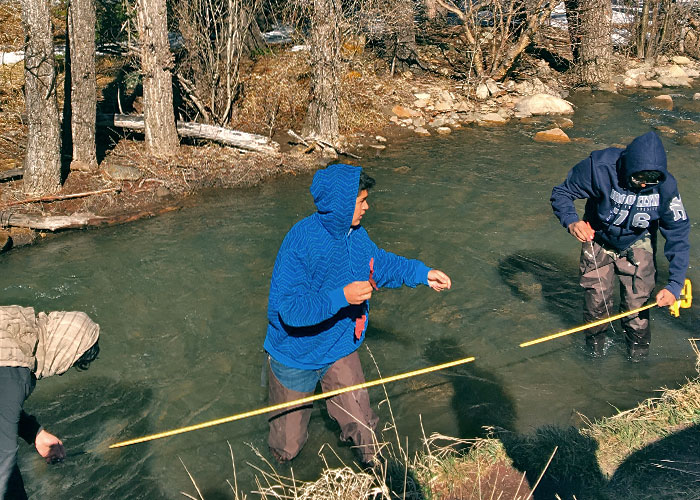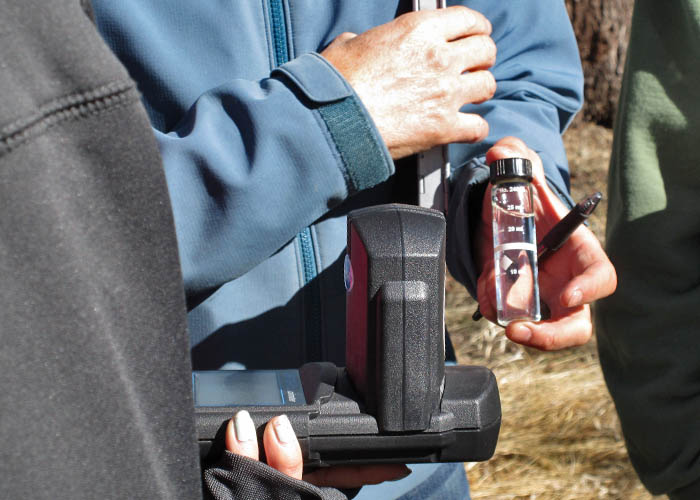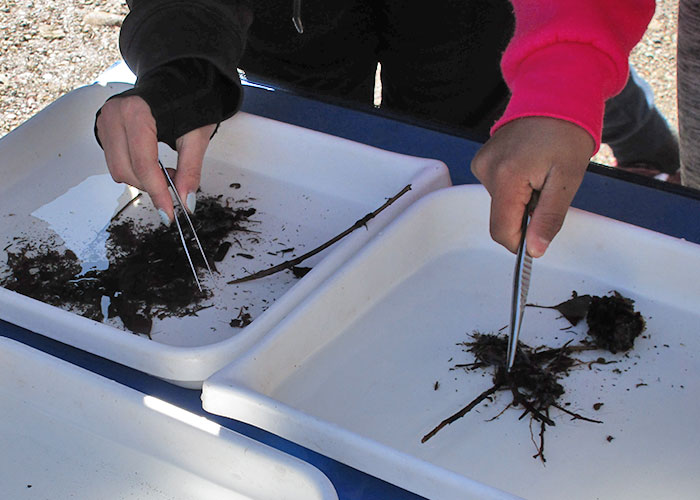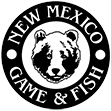
Measuring discharge on the Rio Pueblo. (Ginny Seamster)
Have you ever wondered how clean the water in that river flowing near your house or where you go fishing with your family on the weekends is? Have you ever wondered what kind of impact a house, parking lot, or other development may be having on your favorite stream? The Truchas Chapter of Trout Unlimited and River Source are working with students at Peñasco High School to anwer some of these questions about streams in their local watershed.
The first step in gathering data on your environment is having a question that you want to answer. For the students at Peñasco High School, that question is whether water quality looks different on the Rio Pueblo up vs. downstream of the Sipapu Ski and Summer Resort. There is a lot of activity near the Rio at the Resort, plus there are various parking lots and roads associated not just with the Resort, but with camping grounds near the resort. Dirt parking areas and roads can be sources of sediment and chemicals in fluids that drip from cars onto the ground. Buildings and associated septic systems, be they commercial enterprises or houses, can be sources of effluent and affect the concentration of nitrogen and phosphorous (i.e., nutrients) in the water. Elevated nutrient levels can ultimately lead to depleted oxygen levels and reduced water clarity.

Measuring nutrient concentrations. (Photo by Ginny Seamster)

Sorting through sediment samples for macroinvertebrates. (Ginny Seamster)
Working with educators from River Source and volunteers with Trout Unlimited, the students collected data on a variety of water quality variables, ranging from water temperature to pH, dissolved oxygen, turbidity, and phosphorous and nitrogen concentrations. They also measured river discharge in cubic feet per second and collected and identified invertebrates to broad taxonomic classes as another indicator of water quality.

Rio Pueblo upstream of Sipapu Ski and Summer Resort. (Ginny Seamster)
What was the upshot of all of these data collection efforts? Water quality is fairly good at the different sites the students sampled, with cold water temperatures, high dissolved oxygen content, and fairly low nutrient levels, all of which are good conditions for Rio Grande cutthroat trout and other aquatic species. There was no obvious effect of the ski Resort on water quality. There were some differences in turbidity and nutrient levels between sites, with the turbidity being slightly elevated at a site near a big, dirt parking lot. There is a house just upstream from a site that had slightly higher nutrient levels. On the whole, the river appears to be healthy and able to support trout and other wildlife, as well as human uses such as fishing.
